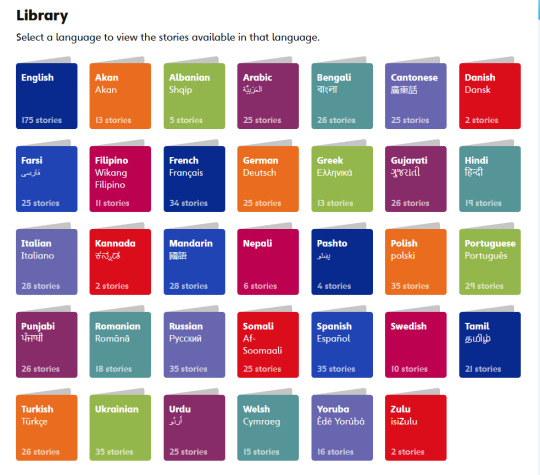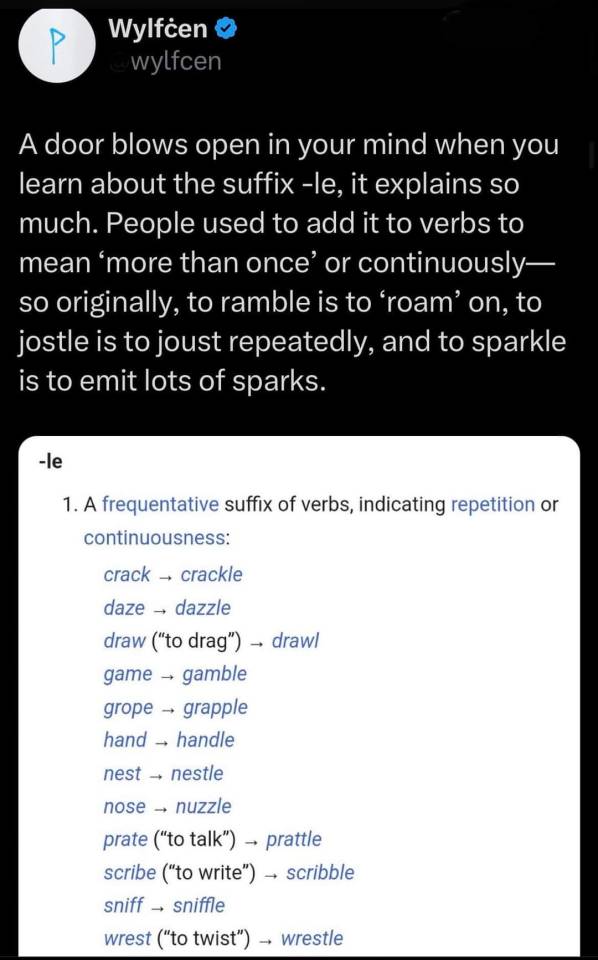Text
#langblr#marathi#languages#language learning#indian languages#linguistics#hindi#south asia#south asian#sanskrit
8 notes
·
View notes
Text
4 notes
·
View notes
Text
2 notes
·
View notes
Text
Never occurred to me that I can use polls on this blog, even though I've participated in a bazillion polls by this point. I must think of nefarious uses for this ability.
4 notes
·
View notes
Text
Those of you who studied Hindi in school, were you specifically taught the nuqta?
(Inspired by @hindisoup's post on the nuqta joke in Darlings)
16 notes
·
View notes
Text
The curious case of the bi-gender word वेळ [veḷ] in Marathi
The Marathi word वेळ [veḷ] very simply translates to 'time' in English. But there's more to this word than meets the eye.

वेळ [veḷ] is, in fact, two words with different meanings and different genders, that share the same pronunciation and spelling.
The first वेळ [veḷ], feminine, refers to a particular time. For example, you might use this to refer to 'this time', or 'the time has come'.
ही तुझी पहिली वेळ आहे. [hī tujhī pahilī veḷ āhe]
This is your first time.
The second वेळ [veḷ], masculine, refers to a span of time. For example, you might use this to refer to 'all this time', or 'we have time'.
इतका वेळ तुला कुठून मिळतो? [itkā veḷ tulā kuṭhūn miḷto]
Where do you find this much time?
Swapping the gender of वेळ [veḷ] comes naturally to native speakers of Marathi, but figuring out which gender to use when might be tricky for learners.
As a summary, remember that if you're thinking of a 'point' in time, you're thinking of the feminine वेळ [veḷ], and if you're thinking of a 'span' of time, you're thinking of the masculine वेळ [veḷ].
30 notes
·
View notes
Note
This is such a cool discussion to have from a perspective we don't see very often, that is from a speaker of Thanjavur Marathi! Thank you so much for your input, it is eye-opening and immensely appreciated.
Do you agree with the popular conclusion in western linguistics that vowel length is not phonemic in modern Marathi (even if it’s indicated in writing)? I went to Maharashtra for the first time during my last visit to India and I did notice that vowel length was a lot more ambiguous than I expected in all cases, but especially in the distinction between अ and आ. But the mutual intelligibility between Maharashtrian Marathi and my dialect, Thanjavur Marathi, is not great, so wtf do I know
This sounds like one of those things that we don't really pay attention to as native speakers, but would be very important for someone learning the language!
However, I do think that there is plenty of ambiguity between short and long vowels, especially इ/ई and उ/ऊ. The example that comes to mind for me is that the -वू suffix in Marathi, where say धावू नकोस is pronounced closer to धाउ नकोस.
I can't say I've noticed an ambiguity between अ and आ though. I think some examples might help there.
I'm no linguist, but this was a really cool ask! Thank you!
35 notes
·
View notes
Text
Japanese Apps instead of Duolingo
Beelinguapp
Bluebird
Bunpo
Busuu
Clozemaster
Drops
HeyJapan
Hiragana Quest
Infinite Japanese
kawaiiDungeon
Ling
Lingodeer
Lingopie
Lingvist
LingQ
LyricsTraining
Mango
Mondly
Oyomi Japanese Reader
renshuu
Takoboto Japanese Dictionary
Todaii
Qlango
Write It! Japanese
587 notes
·
View notes
Text

なるほど。。。
*looks at the camera like im on the office*
145 notes
·
View notes
Note
धावणे -> धावू, similar to say, करणे -> करू or जमवणे -> जमवू.
However, जाणे does become जाऊ as there is no consonant at the end of the vowel root.
But as I said, in practice, we say धाउ/धाऊ or जमउ/जमऊ.
Thank you for the post about the phonetic and (lack of) phonemic differences in Marathi! Very interesting stuff. 🤔
Do you agree with the popular conclusion in western linguistics that vowel length is not phonemic in modern Marathi (even if it’s indicated in writing)? I went to Maharashtra for the first time during my last visit to India and I did notice that vowel length was a lot more ambiguous than I expected in all cases, but especially in the distinction between अ and आ. But the mutual intelligibility between Maharashtrian Marathi and my dialect, Thanjavur Marathi, is not great, so wtf do I know
This sounds like one of those things that we don't really pay attention to as native speakers, but would be very important for someone learning the language!
However, I do think that there is plenty of ambiguity between short and long vowels, especially इ/ई and उ/ऊ. The example that comes to mind for me is that the -वू suffix in Marathi, where say धावू नकोस is pronounced closer to धाउ नकोस.
I can't say I've noticed an ambiguity between अ and आ though. I think some examples might help there.
I'm no linguist, but this was a really cool ask! Thank you!
35 notes
·
View notes
Note
Do you agree with the popular conclusion in western linguistics that vowel length is not phonemic in modern Marathi (even if it’s indicated in writing)? I went to Maharashtra for the first time during my last visit to India and I did notice that vowel length was a lot more ambiguous than I expected in all cases, but especially in the distinction between अ and आ. But the mutual intelligibility between Maharashtrian Marathi and my dialect, Thanjavur Marathi, is not great, so wtf do I know
This sounds like one of those things that we don't really pay attention to as native speakers, but would be very important for someone learning the language!
However, I do think that there is plenty of ambiguity between short and long vowels, especially इ/ई and उ/ऊ. The example that comes to mind for me is that the -वू suffix in Marathi, where say धावू नकोस is pronounced closer to धाउ नकोस.
I can't say I've noticed an ambiguity between अ and आ though. I think some examples might help there.
I'm no linguist, but this was a really cool ask! Thank you!
35 notes
·
View notes
Text
𑘦𑘻𑘚𑘲 𑘩𑘲𑘢𑘲𑘭𑘰𑘙𑘲 𑘊𑘎 𑘀𑘝𑘲𑘫𑘧 𑘔𑘰𑘡 𑘎𑘡𑘪𑘿𑘮𑘨𑘿𑘘𑘨 𑘭𑘰𑘢𑘚𑘩𑘰.
(I found a very nice Marathi to Modi script converter)
𑘊𑘎𑘰 𑘪𑘺𑘎𑘩𑘿𑘢𑘲𑘎 𑘀𑘭𑘿𑘝𑘲𑘝𑘿𑘪𑘰𑘝 𑘦𑘨𑘰𑘙𑘲 𑘥𑘰𑘬𑘰 𑘀𑘫𑘲 𑘟𑘲𑘭𑘝 𑘀𑘭𑘝𑘲.
(In an alternate reality, the written Marathi language would have looked like this)
#marathi#langblr#languages#indian languages#devanagari#does the name of the script remind you of someone?#doesn't remind me of anyone important no
14 notes
·
View notes
Text
Noticed my mum refer to salad dressing as 'तुझं काय ते सलाड ड्रेसिंग' [tuzha kāy te salāḍ ḍresiṅg], and it struck me that the Marathi काय ते [kāy te] has a nuance that's untranslatable for me.
It means something like "or whatever", but also has a tinge of "so-called".
त्यांचा काय तो स्पंज केक [tyāṅčā kāy to spaṅj kek] would be something like "Their so-called sponge cake or whatever".
11 notes
·
View notes
Text
I love you translator notes I love you translators caring that I fully grasp the meaning of the original text I love you translators adding cultural context and specifics so I can better understand what's going on I love you long rants on why a joke is impossible to translate I love you translators adding their little comments to the scene I love you translators feeling human and involved in the material I love you translating as a form of art I love you little t/n abbreviation
33K notes
·
View notes
Text
ok, this is amazing. I found a great site with short stories in 34 languages!

"WorldStories is a growing collection of stories from around the world. The collection includes retold traditional tales and new short stories in the languages most spoken by UK children.
We are adding new stories, translations, pictures and sound recordings every week. So keep coming back to enjoy new content!"
2K notes
·
View notes

